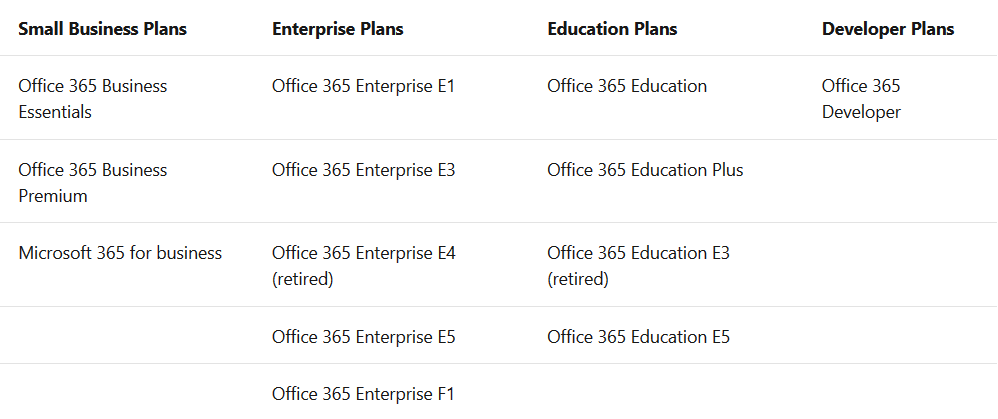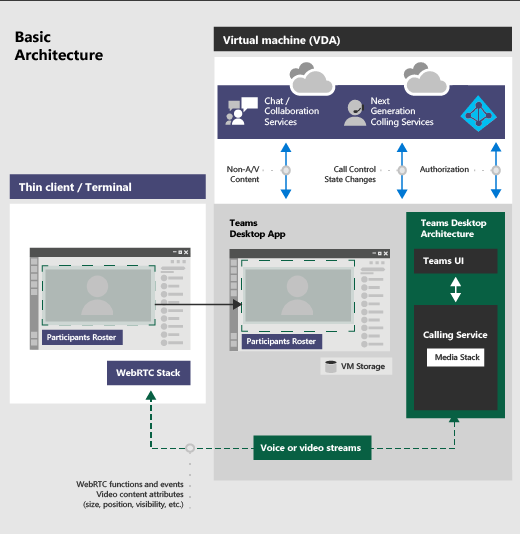Microsoft Teams is a unified communication and collaboration platform that combines chat, audio calling, video conferencing, file storage, and application integration. It is a replacement for Skype for Business, which will reach end of life in July 2021. It comes with a company's Office 365 subscription, depending on your licensing plan, and can integrate with non-Microsoft products. The following Office 365 subscription licensing plans enable users for Teams:

Image via Microsoft.
By hosting Microsoft Teams in a Citrix VDI solution, organizations can centrally manage and secure it behind their various security layers. However, one of the key components of Microsoft Teams is its audio and video capabilities. Historically, AV communications have been one of the main challenges when delivering a virtual computing experience that is the same or better than a local PC.
Microsoft and Citrix have worked together to certify Teams on Citrix VDI using enhanced AV optimizations that improve VDI user experience for chat, audio calling, video conferencing, and collaboration. These optimizations are achieved by offloading the audio, video, and screen sharing to the endpoint. The content is rendered locally on the endpoint using the HDX WebRTC media engine built into the Citrix Workspace App. Traffic is also routed directly between peers to provide optimal user experience. These optimizations are transparent to the user as Teams still has the look and feel of a native user experience.

Image via Microsoft.
Another key benefit of the AV optimizations are they improve server scalability of the Citrix VDA workloads. By rendering audio, video, and screen sharing content locally, minimal CPU resources are required by the Teams application running on the Citrix VDA virtual machine. Improving server scalability leads to cost savings, especially when running workloads in a public cloud when CPU reprocess is one of the primary costs.
Here are the list of requirements needed for the AV optimizations:
- Virtual Machine (VDA)
- Virtual Delivery Agent 1906.2 or higher, minimum version
- Supported Operating Systems:
- Windows 10 64-bit, minimum versions 1607 up to 1903.
- Windows Server 2019, 2016, and 2012 R2 (Standard and Datacenter Editions)
- Thin Client / Terminal
- Citrix Workspace app 1907 for Windows or higher, minimum version
- Supported Operating Systems
- Windows 7, 8, and 10 (32-bit and 64-bit editions, including Embedded editions)
- Windows 10 IoT Enterprise 2016 LTSB (v1607) and 2019 LTSC (v1809)
- Supported Thin Clients
- HP Thin Clients verified: t630/t640, t730/t740, mt45.
- Dell Thin Clients verified: 5070, 5470 Mobile TC
- For a complete list of verified endpoints, please visit http://citrixready.citrix.com and browse for “MS Teams Optimized”.
- Additional Hardware Requirements
- Approximately 2.2–2.4 GHz dual core CPU that can support 720p HD resolution during a peer-to-peer video conference call.
- Dual or quad-core CPUs with lower base speeds (~1.5 GHz) equipped with Intel Turbo Boost or AMD Turbo Core that can boost up to at least 2.4 GHz.
One of the important requirements to keep in mind is that it requires a minimum Citrix Workspace 1911 for Windows and Citrix VDA 1906, both of which are Current Release. Citrix recently announced the latest VDA LTSR release, version 1912, which includes the latest AV optimizations. This is good news for enterprises that have standardized on LTSR.